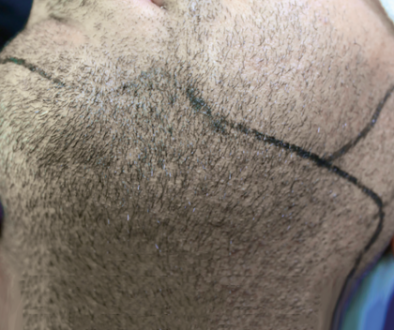Is Hair Transplant Surgery Suitable for Patients with DUPA (Diffuse Unpatterened Alopecia)?
This comment, addressed by Coalition hair restoration surgeon Dr. Michael Beehner was shared by a member of our Hair Loss Social Community and Discussion Forums:
I once read where someone had paid about $20,000 for a number of hair transplants and eventually got to Dr. Jerry Wong who told him that he has some rare kind of DHT resistance and all transplanted follicles would fall out (as has happened in his case). Anyone have more info on this? And, would top-notch hair restoration physicians check for this before operating? Is it possible to know before an operation?
 The condition you are referring to is known by the acronym, “DUPA” It stands for “diffuse unpatterned alopecia.” It is usually easy to tell on close inspection of a consultation patient’s scalp, but we always double-check with magnification, usually around 30x power. The density is very low and often there are a significant percentage of “miniaturized” hairs also, which do not have many more life cycles to live before they disappear.
The condition you are referring to is known by the acronym, “DUPA” It stands for “diffuse unpatterned alopecia.” It is usually easy to tell on close inspection of a consultation patient’s scalp, but we always double-check with magnification, usually around 30x power. The density is very low and often there are a significant percentage of “miniaturized” hairs also, which do not have many more life cycles to live before they disappear.
There are a number of reasons why hair loss suffers with DUPA make poor transplant candidates: The first is that, as they thin, the donor scar (or even the FUE white dots) will become more and more obvious and detectable.
Another reason is that it is hard to move that much hair. I have had a couple of men over the years, usually in their early 30’s, for whom things were evolving much more slowly, and we discussed a very limited plan of “cherry picking” a number of hairs from the rear donor wall and using them to frame the face in a limited area at the front-center. I obviously pointed out the positives and the negatives, and both men elected not to go forward with it. One strategy that can work to help these men for a few years is to use a hair loss concealer such as DermMatch or Toppik. I am not aware that Propecia (finasteride) helps to reverse this condition.
Two other situations in which a person would not be a candidate for hair transplantation are the following: First, a person with an auto-immune condition which would result in lymphocyte cells from the disease process attacking the newly transplanted follicles and not letting them survive. The two most common conditions we encounter in this regard are Lichen Planopilaris and Alopecia Areata. Lupus is another such condition. Sometimes, after a couple of years have gone by and the process has stabilized, they can be transplanted, but the patient has to be warned that it is possible that the original condition could reactivate and attack the transplanted follicles and result in their permanent loss. If a hair surgeon does elect to later transplant one of these patients, either a biopsy (to make sure the disease is inactive) or a small area of test grafts is a good idea before embarking on a big session.
The second situation that would make a person a poor candidate for hair transplant surgery is a person who has only so much donor hair available and, after explaining to the patient what the most that can be done is, the patient states that would not satisfy him. You never want an unhappy patient or one whose expectations are unrealistic, given the reality of the patient’s situation.
Mike Beehner, M.D.
—-
David (TakingThePlunge)
Editorial Assistant and Forum Co-Moderator for the Hair Transplant Network, the Coalition Hair Loss Learning Center, and the Hair Loss Q & A Blog.
To share ideas with other hair loss sufferers visit the hair loss forum and social community
Get Proven Treatments at the Best Prices by visiting our new online hair loss treatment shop.
Watch hair transplant videos on YouTube
Follow us on: Facebook | Twitter | YouTube
Technorati Tags: hair transplants, hair restoration, DUPA, diffuse unpatterned alopecia, hair loss, FUE, DermMatch, Toppik, Propecia, finasteride, hair transplantation, Alopecia



